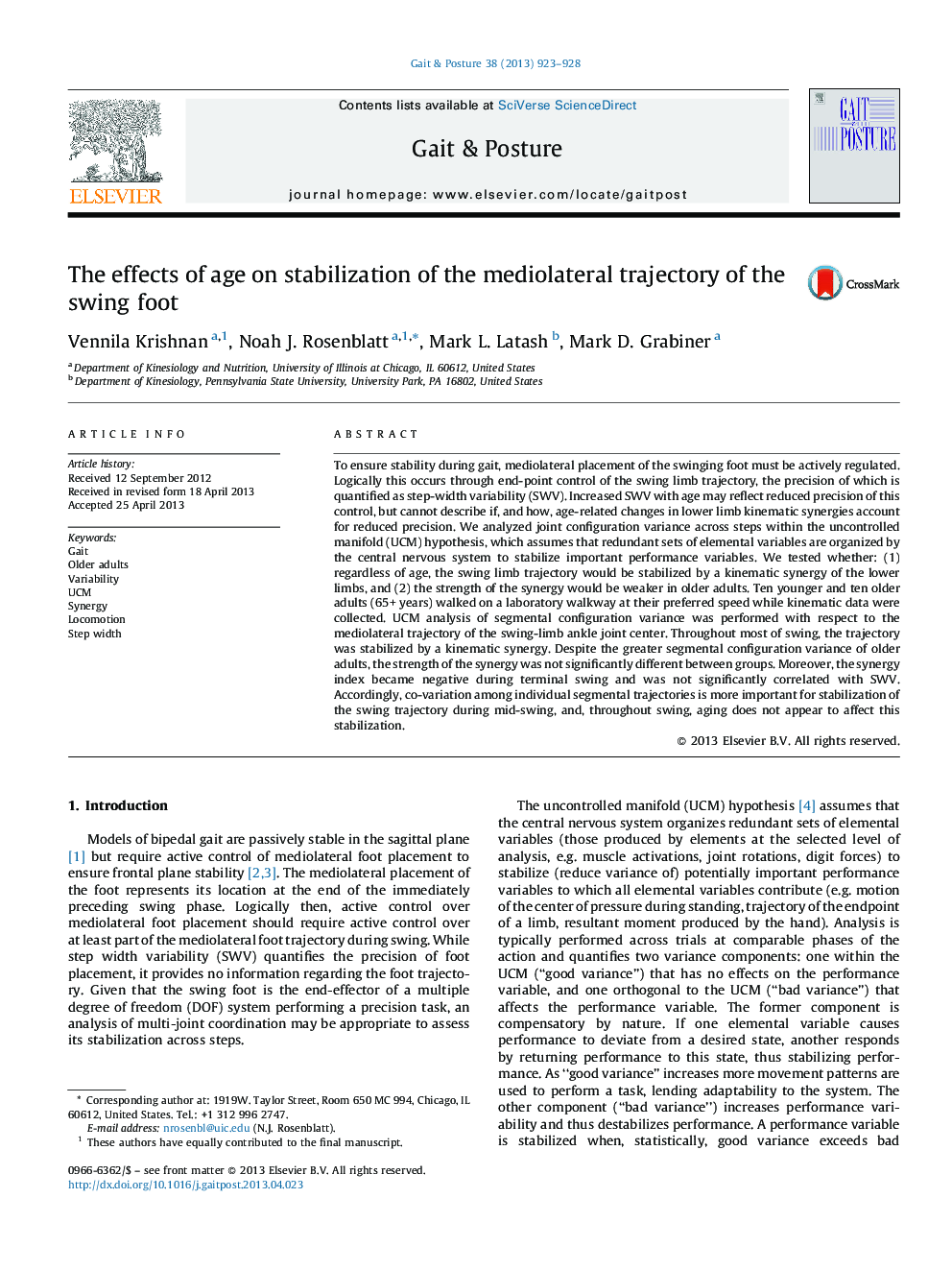| کد مقاله | کد نشریه | سال انتشار | مقاله انگلیسی | نسخه تمام متن |
|---|---|---|---|---|
| 6206797 | 1265652 | 2013 | 6 صفحه PDF | دانلود رایگان |

- We want to explain causes of age-related changes in step width variability.
- We analyze joint configuration variance during gait using the uncontrolled manifold hypothesis.
- A kinematic synergy of the lower limbs stabilizes the mediolateral trajectory of the swing limb.
- Co-variation of joint configurations prior to heelstrike may contribute to step width variability.
- Healthy aging does not affect the stabilization of the frontal plane swing foot trajectory.
To ensure stability during gait, mediolateral placement of the swinging foot must be actively regulated. Logically this occurs through end-point control of the swing limb trajectory, the precision of which is quantified as step-width variability (SWV). Increased SWV with age may reflect reduced precision of this control, but cannot describe if, and how, age-related changes in lower limb kinematic synergies account for reduced precision. We analyzed joint configuration variance across steps within the uncontrolled manifold (UCM) hypothesis, which assumes that redundant sets of elemental variables are organized by the central nervous system to stabilize important performance variables. We tested whether: (1) regardless of age, the swing limb trajectory would be stabilized by a kinematic synergy of the lower limbs, and (2) the strength of the synergy would be weaker in older adults. Ten younger and ten older adults (65+ years) walked on a laboratory walkway at their preferred speed while kinematic data were collected. UCM analysis of segmental configuration variance was performed with respect to the mediolateral trajectory of the swing-limb ankle joint center. Throughout most of swing, the trajectory was stabilized by a kinematic synergy. Despite the greater segmental configuration variance of older adults, the strength of the synergy was not significantly different between groups. Moreover, the synergy index became negative during terminal swing and was not significantly correlated with SWV. Accordingly, co-variation among individual segmental trajectories is more important for stabilization of the swing trajectory during mid-swing, and, throughout swing, aging does not appear to affect this stabilization.
Journal: Gait & Posture - Volume 38, Issue 4, September 2013, Pages 923-928